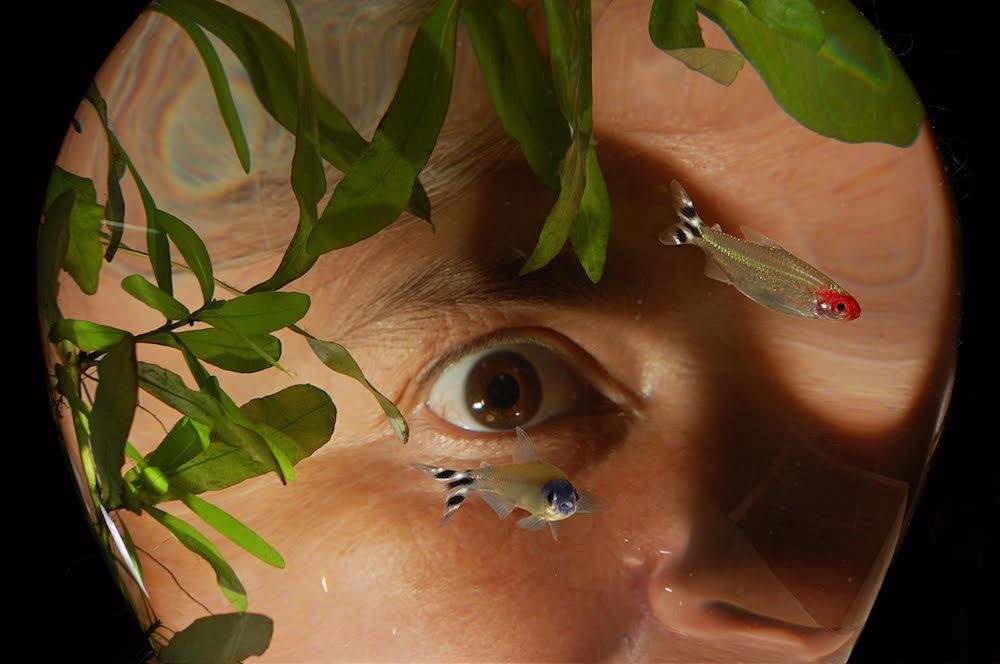Researchers from Skoltech and their colleagues from ESPCI Paris, Chiba University and Japan Agency for Marine-Earth Science and Technology have used a 3D simulation to reveal that small fish swimming in a school can sense the position and tail beat of their fellow fish as water pressure variation on the side of their bodies.
 The fish with the red-colored head is a rummy nose tetra, the species considered by the researchers in the study reported in this story. Image Credit: flickr.com/Apionid (CC BY-NC-ND 2.0).
The fish with the red-colored head is a rummy nose tetra, the species considered by the researchers in the study reported in this story. Image Credit: flickr.com/Apionid (CC BY-NC-ND 2.0).
This technique is supposed to allow fish to maximize swimming efficiency as a group even when there are no visual signals available, such as when they are in full darkness.
Understanding fish group mobility is essential for anticipating their migration and constructing aquatic research robots that replicate fish behavior, either to save energy by swimming in a group or to blend in with the ocean organisms they are investigating. The study was published in the journal Frontiers in Robotics and AI.
Fish swimming in swarms may benefit by adopting ideal relative locations and coordinating their movements, according to a previous study. Fish must depend on more than just eyesight for tracking, especially in dark or muddy environments.
In this study, we simulate two rummy nose tetra fish swimming adjacently in various configurations in calm waters. We investigate the pressure signals propagating through water from one fish’s body to the other’s. While we don’t know how the animals process them, the simulation shows that signals reaching the tactile sense organs are intelligible against the background noise and carry information about the neighbor’s position and tail movement.
Dmitry Kolomenskiy, Study Co-Author, Assistant Professor, Skoltech Center for Materials Technologies
Kolomenskiy suggests that future studies should look at louder surroundings, larger groups of fish and artificial intelligence to see how fish interpret such signals. Earlier work at Skoltech on ant whirling and bird flocking highlighted the promise of AI for studying the brain mechanisms underpinning animal collective movements.
A new trend in robotics will increasingly see modular designs of smaller robots working in groups or swarms. Research published in the May edition of Acta Astronautica, for example, will investigate an eight-wheel Mars rover that may function as a cluster of two-wheeled robots, optimizing exploration time.
Likewise, swarms of robotic fish outfitted with pressure sensors might replace bigger underwater drones that survey historic shipwrecks — such as the newly found Ernest Shackleton’s Endurance — or analyze fish behavior by making use of the hydrodynamic benefits of swimming in a group. The extra benefit in the latter scenario is that studies have shown that fish are less startled by sea probes that feel and look more like fish.
Understanding how much energy is consumed as food fish preserve by moving in groups is also useful for anticipating their migratory patterns, which is useful to the fishing business.
Journal Reference:
Li, G., et al. (2022) Hydrodynamical Fingerprint of a Neighbor in a Fish Lateral Line. Frontiers in Robotics and AI. doi.org/10.3389/frobt.2022.825889.